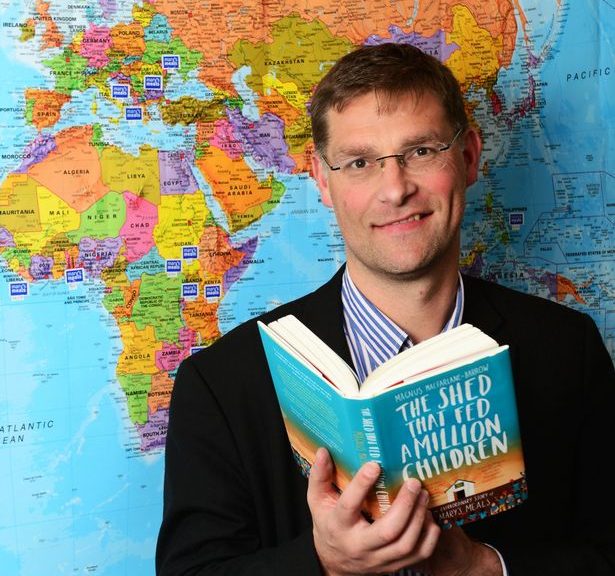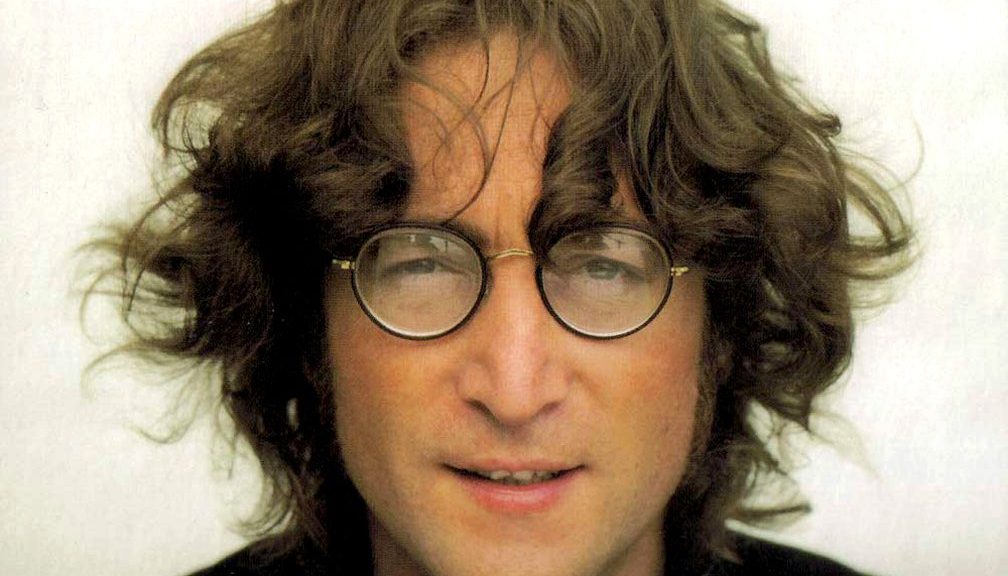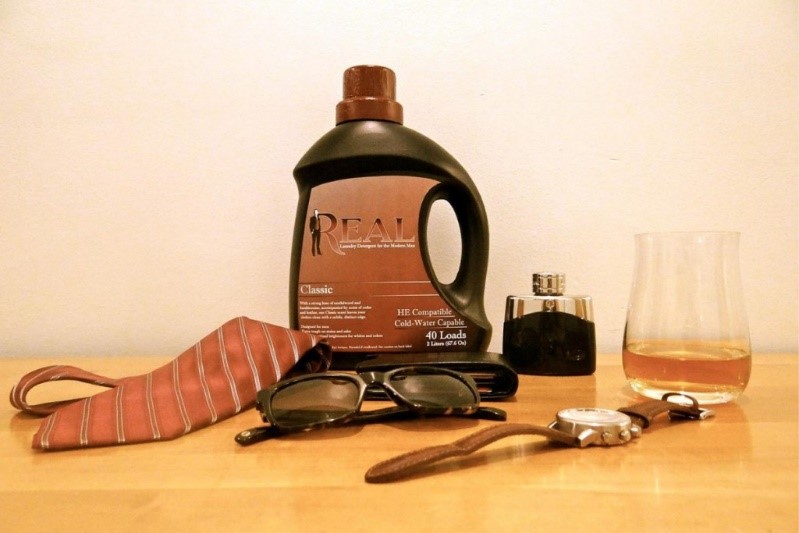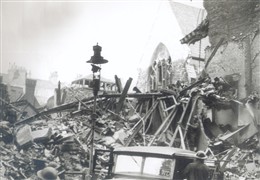One good deed leads to another
Charity brands do great work but not all of them have great stories about how they came into being. The story of Mary’s Meals is a great tale. In fact, it is so good that it’s now available as a book ‘The shed that fed a million children’.
Magnus MacFarlane-Barrow, Mary’s Meals Founder and CEO explains “A lot of my time is spent verbally telling people the story of Mary’s Meals. Over and over again I was seeing how much people loved that story and that they wanted to know more. I thought, yes, this is an amazing story, let’s write it down.”
I recommend you read the book but as an appetiser, here is a shorter version.
The story starts in 1983, when Magnus and Fergus MacFarlane-Barrow joined their parents on a pilgrimage to the Marian shrine of Medjugorje in Bosnia-Herzegovina. The family renewed their family’s Catholic faith and it led Magnus’ parents to convert their guesthouse into a retreat centre or ‘Family House of Prayer’.
Years passed and Magnus and his brothers got jobs on fish farms.
It was one night in 1992 while Magnus and Fergus were enjoying a pint in their local pub that they were reminded of their trip to Medjugorie as they saw TV news reports of the Bosnian conflict.
They decided they had to do something and after spending much of the night debating different options they decided to organise a local appeal and to volunteer to take the donations to Bosnia themselves.
Food, clothing, medicines and donations of money soon began to arrive at their home, where they were stored in the family shed.
In just three short weeks, the shed was full and the brothers arranged a week’s holiday. They bought a second-hand Land Rover, and joined an aid convoy driving back to Medjugorje, the site of their earlier pilgrimage.
A week later they returned to Argyll feel saddened but proud of having done a good deed. They were expecting to return to work but while they had been away the shed had filled up with donations again.
Magnus decided to give up his job and take a ‘gap year.’ He sold his small house so he could drive aid out to Bosnia-Herzegovina for as long as the public kept donating.
The public, however, did not stop and Magnus was never to return to his old job.
It soon became necessary to set up a registered charity, Scottish International Relief (SIR). Over the next 10 years, SIR expanded. While it continued to deliver aid to Croatia and Bosnia-Herzegovina, it began building homes for abandoned children in Romania and helped returning refugees in Liberia by setting up mobile clinics and other projects.
Magnus was on another trip, this time to Malawi, when he met a young boy who would turn out to be the inspiration for Mary’s Meals.
Magnus himself picks up the story. “I met Edward in 2002, after his father had died of AIDS the year before, and he lived with five siblings and his mother Emma in abject poverty in a mud-brick house. Emma also had AIDS and did not have long to live”.
 Magnus asked Edward what he hoped for in life. He replied: “I want to have enough food to eat and to go to school one day.”
Magnus asked Edward what he hoped for in life. He replied: “I want to have enough food to eat and to go to school one day.”
His simple but powerful wish inspired Magnus to set up a new campaign Mary’s Meals – to provide meals at schools so that children could get both a good meal and an education.
In 2012 with the school feeding campaign having become the sole focus of its work, SIR officially changed its registered charity name to Mary’s Meals. Edward’s words were translated into the brand’s vision statement:
Every child deserves an education – and enough to eat.
Our vision is that every child receives one daily meal in their place of education and that all those who have more than they need, share with those who lack even the most basic things.
Working together with those who share our vision, we believe there is no good reason why this cannot be realised.
In an interview with the Daily Record in 2015, Magnus recalls a second and equally heart-rending meeting with Edward.
“I was introduced to him again recently and I have to say that his story is unsettling for me and very poignant, because it reminds me how much there is still to be done. He is still living a life of terrible poverty and working the fields every day to get enough food to survive.
Mary’s Meals didn’t reach him in time but his youngest siblings have been helped in their schools and his son will soon be going to a school where they serve Mary’s Meals too, so I guess we have helped him.
He had heard of Mary’s Meals but he didn’t know that they had anything to do with him. Edward is [now] very aware of what his words led to, thank God, and I think he is proud of that.
I do often wish that we did more for Edward, because his words were the catalyst for so much work by so many people.”
Today Mary’s Meals is feeding over 1,100,000 of the world’s poorest children every day they attend school.
The original shed is still in use as part of Mary’s Meal headquarters.
Magnus has been presented with a CNN Hero Award.
His autobiography “The shed that fed a million children” was published in 2015.
But in his own words “His [Edward’s] story shows that there is so much still to do.”
Footnote: His autobiography contains many more snippets and anecdotes about the Mary’s Meals story, including the time he tried to invite Billy Connolly’s wife Pamela Stephenson to an event but got mixed up and invited Pamela Anderson instead. When the Baywatch star turned up it was a bit of a surprise but she was made very welcome.


 The biscuit itself can be traced back to the 18th Century and Dr. William Oliver.
The biscuit itself can be traced back to the 18th Century and Dr. William Oliver.
 In the first chapter of Puck of Pook’s Hill by Rudyard Kipling: “[the child heroes of the story] were not, of course, allowed to act on Midsummer Night itself, but they went down after tea on Midsummer Eve, when the shadows were growing, and they took their supper—hard-boiled eggs, Bath Oliver biscuits, and salt in an envelope—with them.” […] Everything else was a sort of thick, sleepy stillness smelling of meadow-sweet and dry grass.”
In the first chapter of Puck of Pook’s Hill by Rudyard Kipling: “[the child heroes of the story] were not, of course, allowed to act on Midsummer Night itself, but they went down after tea on Midsummer Eve, when the shadows were growing, and they took their supper—hard-boiled eggs, Bath Oliver biscuits, and salt in an envelope—with them.” […] Everything else was a sort of thick, sleepy stillness smelling of meadow-sweet and dry grass.”

 In India, Ariel is taking a different approach. Using research that showed how little men did at home and how even 2/3 of children believed doing the laundry was women’s work they launched an advertising campaign to encourage men to “share the load”. In one ad a father is shown apologising to his grown up daughter for not having set a better example around the house and ends with him helping with the washing.
In India, Ariel is taking a different approach. Using research that showed how little men did at home and how even 2/3 of children believed doing the laundry was women’s work they launched an advertising campaign to encourage men to “share the load”. In one ad a father is shown apologising to his grown up daughter for not having set a better example around the house and ends with him helping with the washing. 

 In a relatively short time, Land Securities established itself as the UK’s leading property company. A position it still holds today.
In a relatively short time, Land Securities established itself as the UK’s leading property company. A position it still holds today.